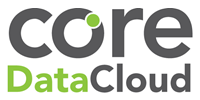Recovery As A Service
Just about everything has been offered ‘as a service’ by now – starting with Software as a Service (SaaS), Infrastructure as a Service (IaaS) and Communication as a Service (CaaS) – we’re almost at the stage of Service as a Service. Nonetheless there appears to be room for at least one more, as Core DataCloud has launched Recovery as a Service (RaaS). Commercially this makes perfect sense both for customers and for Core DataCloud, which offers its Recovery Assurance service using PHD Virtual’s ReliableDR as well as enterprise-class hardware from IBM Flex System blade servers and EMC Isilon.
Core DataCloud director Sharad Saggar explains that there are many ways in which the idea appeals to clients, in addition to the obvious transfer of backup and recovery from capital expenditure (CapEx) to operating expense (OpEx). It’s more than that, though: “As the world becomes more virtualized, people want some level of high availability and assurance that their systems are protected,” he says, “without having everything on premise.”
This is part of the inevitable evolution of online backup, dating back as far as the tape days, he believes. “It moved to the cloud, then we offered image-based backup, which reduced RTOs and now we’re offering high availability with VMware replication.” People replicate their infrastructures to the company’s data center, so that if there is an outage they can switch immediately to Core’s facility and continue running.
It’s important to impress upon clients that they still need backup even when their data is in the cloud. Many end users believe that as long as their infrastructure is off site it’s invincible, and as Saggar points out, it’s not. “If your critical application is in the cloud, that just means it’s on a server somewhere else – it still needs to be backed up and retrievable.”
That last notion is vital, of course. So often people back their data up and assume they have ‘done it’ – ticked the box, perhaps, and only find there is a major problem when it comes to restoring it. This is why Core’s offering includes the ability to restore anytime, so the IT professional can check that critical applications and data are retrievable before there is an actual crisis. The platform conducts regular application recovery tests, which generate real-time dashboards and PDF reports providing an accurate indication of how long it will take to recover any application at any given point in time. This reporting can meet auditor requirements and also delivers confidence that SLAs are being met.
As would be expected from an MSP, Core DataCloud targets the ‘medium’ size of SMB as well as a few enterprise-sized clients. Organisations including barristers chambers 4 New Square have found themselves saving time and therefore money restoring data automatically that would otherwise have been very laborious, because of Core’s service.
The business benefits are enormous, not only because of the transfer to OpEx. “If you have to invoke disaster recovery then you have much more to do, such as re-IP-ing all of the servers,” Saggar points out. This is automated with the Core service, freeing the IT department to focus on being strategic rather than a fire fighting service. There is also the ability to scale down as well as up, when demand is seasonal rather than constant.
So often the IT industry adopts initials or concepts and it seems it’s done it for the sake of it. ‘As a service’ appears not to be one of these, and buying backup and more importantly recovery as a tested, reliable piece of utility computing is likely to pay the customer dividends for a long time to come. It will be enlightening to see how many other MSPs wake up to the opportunity in the near future, and take advantage of white-labelling Core DataCloud’s services.
This article was written by Guy Clapperton for the Linkedin Group MSP Forum (in association with IBM) a subgroup of IT Perspectives (in association with IBM). You can comment on the article and read it in full here.


